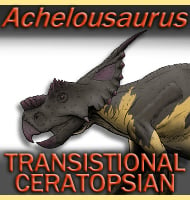In Depth
For most of its history Hyracotherium has been associated with the genus Eohippus (dawn horse) that was based upon fossils described by Othniel Charles Marsh in 1876. This is mostly due to the commonplace presentation of the name Eohippus towards the public and subsequent mention in fiction, the pinnacle of which was the appearance of a stop motion animated Eohippus in the 1969 film ‘The Valley of Gwangi’. However some study of Eohippus remains have led palaeontologists to the conclusion that these remains are actually the same as those of an even earlier named horse called Hyracotherium. Because Hyracotherium was the first name established it has, under international rules governing the naming of animals, priority over Eohippus which was named thirty-five years later. Since this time though there has been further evaluation of associated with these fossils which has led to Eohippus being preserved as separate to Hyacotherium.
The first Hyracotherium remains were discovered in England and described by Richard Owen, one of the most important palaeontologists of the day. Owen initially thought that he might be dealing with a hyrax, a small mammal that still exists today, but were far more numerous during the Eocene. However Owen only observed this similarity in the teeth, and much of the skeleton of this specimen was missing, which resulted in the name which means ‘Hyrax -like beast’. Marsh’s later described specimen was virtually complete, and while it was named in the early period of the ‘bone wars’, Marsh may have only had the description of the incomplete remains of Hyracotherium to compare his discovery against.
Marsh’s specimen, as well as other later and more complete discoveries revealed the true nature of Hyracotherium as one of the most primitive horses so far known, which often sees this animal placed in the staring position of the evolution of horses. Some palaeontologists have even gone one step further however by suggesting that Hyracotherium is the form that is ancestral to the perissodactyl (odd-toed ungulate) mammals that also include tapirs and rhinos. This extension of the evolution theory is not supported by all however, and currently most palaeontologists only refer to Hyracotherium in terms of horse evolution rather than wider mammal groups.
Although Hyracotherium is seen as a primitive horse, it actually still had toes rather than hooves, with four on the front feet and three on the rear feet. Later horses including those we know today support their weight on a single well developed toe that ends in a hoof. Hyracotherium was probably not on open plains runner though, and would have been better off roaming the undergrowth around forested areas where it could easily hide its small body from the eyes of the predators of the day. However as the Eocene progressed the landscapes of the time began to change from forest to a predominance of open plains that necessitated a change to a faster running form. The teeth of Hyracotherium are low crowned, a trait that is indicative of a browser of certain plant parts like leaves and fruits rather than a grazer of grass. There are forty-four teeth in total with a small gap called a diastema near the front of the mouth similar to many mammals. This diastema separates the collecting teeth at the front like the incisors that snip off plant parts from the processing teeth at the back like the molars that grind and mash food before it is swallowed. The molars also show the beginning of the progression towards the molar form of modern horses. Overall Hyracotherium is generally thought to have lived and had a similar ecological niche to that of a small forest dwelling deer.
Hyracotherium is considered to have been quite an intelligent animal for its time with a brain that was proportionately larger in terms of comparison to its body size than it mammalian contemporaries. It’s thought that this extra brain size was an advancement towards its senses such as sight, smell and hearing so that it could detect the presence of other animals, particularly potential predators. With its lightweight build the best chance that Hyracotherium had of staying alive was to use speed and agility to outrun predators before they got too close to be a threat.
Further Reading
– Description of the Fossil Remains of a Mammal (Hyracotherium leporinum) and of a Bird (Lithornis vulturinus) from the London Clay. – Transactions of the Geological Society of London, Series 2, VI: 203-208. – Richard Owen – 1841. – The beginning of the equoid radiation. – Zoological Journal of the Linnean Society 112 (1–2): 29–63. – J. J. Hooker – 1994. – Quo vadis eohippus? The systematics and taxonomy of the early Eocene equids (Perissodactyla). – Zoological Journal of the Linnean Society 134 (2): 141–256. – D. J. Froehlich – 2002. – Fossil Horses–Evidence for Evolution. – B. J. MacFadden – 2005.










